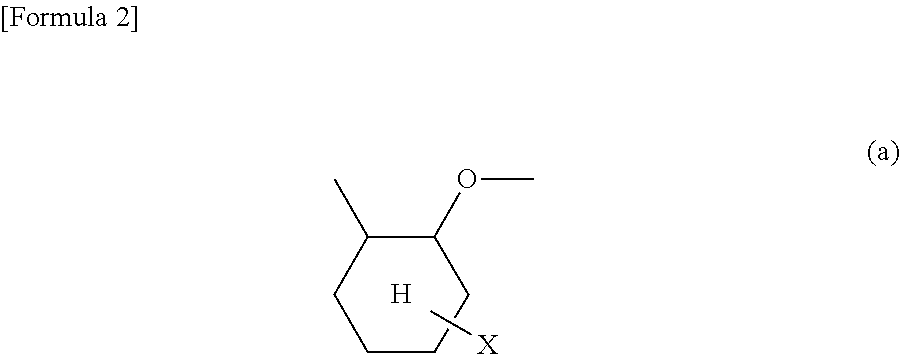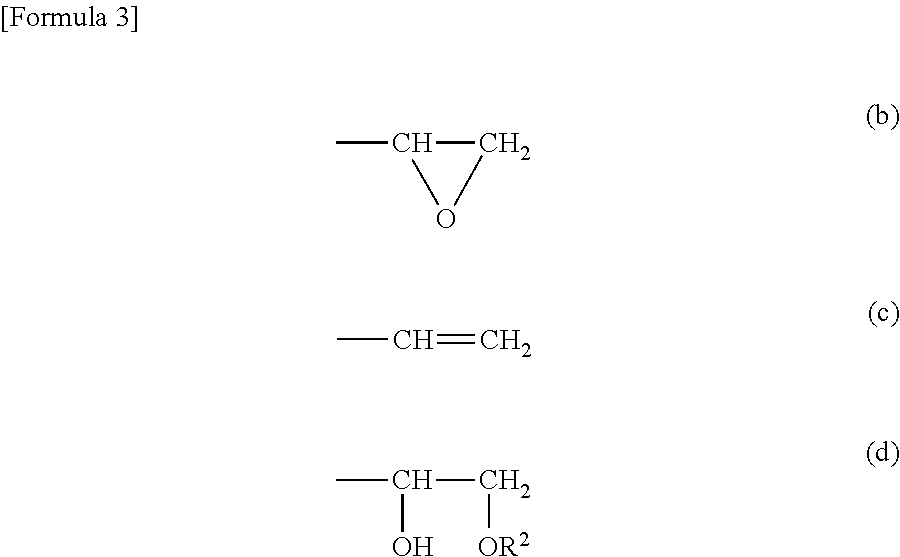Photosensitive resin composition for forming biochip, and biochip
a biochip and resin composition technology, applied in the field of photosensitive resin composition for forming biochips and biochips, can solve the problems of difficult preparation of other than a flat plate shape, difficult surface treatment of glass, and difficulty in forming glass, etc., and achieve high aspect ratio, easy formation, and high fine pattern
- Summary
- Abstract
- Description
- Claims
- Application Information
AI Technical Summary
Benefits of technology
Problems solved by technology
Method used
Image
Examples
example 1
[0088]Fifty parts of trade name “EHPE 3150” manufactured by Daicel Corp. [1,2-epoxy-4-(2-oxiranyl)cyclohexane adduct of 2,2-bis(hydroxymethyl)-1-butanol; solid polyfunctional alicyclic epoxy resin], 10 parts of trade name “Epolead GT401” manufactured by Daicel Corp. [epoxidized tetrakis-(3-cyclohexenylmethyl)butanetetracarboxylate-modified ε-caprolactone; liquid polyfunctional alicyclic epoxy resin], 5.5 parts of a cationic photoinitiator (manufactured by San-Apro Ltd., trade name “CPI-100P”; 50% solution of diphenyl[4-(phenylthio)phenyl]sulfonium hexafluorophosphate in propylene carbonate), and 50 parts of cyclopentanone (solvent) were mixed by stirring to prepare a photosensitive resin composition.
[0089]The obtained photosensitive resin composition was uniformly applied onto a hexamethyldisilazane (HMDS)-coated glass substrate (2 cm×2 cm) using a spin coater to form a photosensitive resin composition layer. In this context, the coating of HMDS onto the surface of the glass substra...
PUM
| Property | Measurement | Unit |
|---|---|---|
| excitation wavelength | aaaaa | aaaaa |
| softening point | aaaaa | aaaaa |
| softening point | aaaaa | aaaaa |
Abstract
Description
Claims
Application Information
 Login to View More
Login to View More - R&D
- Intellectual Property
- Life Sciences
- Materials
- Tech Scout
- Unparalleled Data Quality
- Higher Quality Content
- 60% Fewer Hallucinations
Browse by: Latest US Patents, China's latest patents, Technical Efficacy Thesaurus, Application Domain, Technology Topic, Popular Technical Reports.
© 2025 PatSnap. All rights reserved.Legal|Privacy policy|Modern Slavery Act Transparency Statement|Sitemap|About US| Contact US: help@patsnap.com



